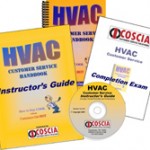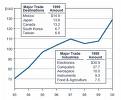Editor’s note: This is Part I of a two part story on procuring construction services. It provides an overview, Part II deals in contracting matters.

Robert Menard, Certified Purchasing Professional, Certified Professional Purchasing Consultant
If you have ventured into construction procurement, you know that the Wild West and construction contracting share a common bond, the lack of rules. There are a few laws, mostly in public markets, but no universally observed rules. For vets and tenderfoots alike, here are some goodies to pack in your saddle bags for the rough ride through unknown territory.
The contractor’s profile
The construction industry’s typical contractor is highly entrepreneurial, privately owned, and family managed business. Only a handful are publicly traded and they are not the darlings of Wall Street. Construction firms are also not very large in terms of sales. According to ENR , a leading industry publication, only four of the many thousands of companies nation wide have annual sales exceeding ten billion. Compare this to the Fortune 500 list of which over half have sales exceeding one billion.
Construction firms tend to be thinly capitalized and highly leveraged. To compensate for such financial straits, the industry engages in a variety of risk transfer vehicles like indemnity and the “pay when paid” clause. This onerous provision contractually protects a buyer from paying the seller if the buyer was not paid! This transfer drives credit and other risks to the lower tier (sub-contractors and suppliers), and often less sophisticated parties who cannot sustain and are largely unaware of such risks. Suppose that a private or public owner needs construction services. Traditionally, that owner would hire an architect (sometimes engineers) and seek bids from general contractors (GCs) who then collect bids from sub contractors (subs) and their sub-contractors (sub-subs) for the many individual trades. The GCs would then offer the Owner a lump sum bid.
The lay of the land
Suppose that a private or public owner needs construction services. Traditionally, that owner would hire an architect (sometimes engineers) and seek bids from general contractors (GCs) who then collect bids from sub contractors (subs) and their sub-contractors (sub-subs) for the many individual trades. The GCs would then offer the Owner a lump sum bid.

Click here for Bob's book and CDs
Today’s options for delivery of construction services extend beyond the traditional and include Construction Management (CM), at risk or for fee, Design/Build, and a variety of forms of contract may be deployed. Brief details on these terms are found in the Glossary.
Whether you choose Design/Build, or hire a CM or a GC, be advised that these prime contractors (first tier in the chain) actually perform very little of the on site construction work. By most estimates, more than 90% of the work will be performed by subs and their sub-subs. The prime contractor may ride herd, but the workhorses work are the subs. In terms of Total Cost of Ownership, the quality, service, and delivery will be largely in the hands of the subs.
Buyers must be alert to the potential pitfalls resulting from payment problems like mechanics liens for improvements to real property for which payment is not made. In Part II, we’ll talk more about available precautions like surety bonds.
****************************************************************************************
Glossary I
Architect a licensed professional in general design; specialties in landscape or certain market sectors are common. Architectural firms can combine with engineering firms to form A/Es
Bid (Tender in Canada) a price offered to a customer buy a general or sub contract scope of work
Construction Manager (CM) at risk a delivery method by which a GC absorbs some risk in return for greater management input; rather similar to traditional general contracting
Construction Manager (CM) for fee a delivery method by which a GC (usually) advises Owner on methods, materials contractor selection, and related matters for a fee but does not perform actual building work or suffer any risk
Design/Build a delivery method whereby the lead party is usually the GC that has teamed with an Architect and Engineer to capitalize on the talents of each to produce a better result for the Owner
Engineer a licensed design professional (P.E. for professional engineer) , often a consultant to the Architect, who provides specific services such as structural, transportation, mechanical, electrical, and other specialties. Architectural firms can combine with engineering firms to form A/Es
General Contractor (GC) Sometimes Prime Contractor, the party who contracts directly with the Owner and is first in the payment chain
Sub Contractor a specialty or trade (masonry, carpentry, roofing, elevator, electrical, mechanical, and many more) contractor who works for the GC
Sub-sub-Contractor a specialty or trade (insulation, controls, sheet metal, etc) contractor who works for a Sub-contractor
Owner the ultimate construction consumer, in most instances
Private market contracts let by no government parties and not subject to public bidding statues and regulations
Public market contracts let by governmental units and subject to a variety of statues like public advertising and bidding, bonding requirements and other regulations
 Editor’s note: Steve writes, speaks, and consults on customer service..
Editor’s note: Steve writes, speaks, and consults on customer service..


 isadvantaged position. The house was ideal for us and in our 1st choice neighborhood so we did not to walk away. However, it was listed at $219,900 which was more than we wished to pay. We planned to start the negotiation with the most elementary of tactics “the price is too high”. We needed information to shift power and price to our side. The best way is to ask targeted questions. Specifically, we need information about (1) time, (2) economic considerations, and (3) sense of urgency.
isadvantaged position. The house was ideal for us and in our 1st choice neighborhood so we did not to walk away. However, it was listed at $219,900 which was more than we wished to pay. We planned to start the negotiation with the most elementary of tactics “the price is too high”. We needed information to shift power and price to our side. The best way is to ask targeted questions. Specifically, we need information about (1) time, (2) economic considerations, and (3) sense of urgency. Time
Time for the purchase of this house who had an urgency to buy while the rates were low. Other interested buyers would trigger my
for the purchase of this house who had an urgency to buy while the rates were low. Other interested buyers would trigger my 
 In general, hotel chains use the Yield/Revenue Management pricing model developed by the airline industry. This is the reason retail buyers pay more for the same room when the hotel is almost full than when occupancy rates are low.
In general, hotel chains use the Yield/Revenue Management pricing model developed by the airline industry. This is the reason retail buyers pay more for the same room when the hotel is almost full than when occupancy rates are low. Airlines are primarily interested in putting butts in the seats, raising seat occupancy ratios, and maximizing revenue miles. They will sell blocks of seats to “consolidators” at huge discounts just to raise the occupancy ratio. Buying pros know how airlines price their services and they know how the airlines calculate their costs. A buying pro can reduce the cost of airfare travel by multiples more than an unskilled negotiator beating on the Price alone. We routinely eliminate the penalties for walk up fares, last minute changes, and help the airline to meet its requirements at the same time.
Airlines are primarily interested in putting butts in the seats, raising seat occupancy ratios, and maximizing revenue miles. They will sell blocks of seats to “consolidators” at huge discounts just to raise the occupancy ratio. Buying pros know how airlines price their services and they know how the airlines calculate their costs. A buying pro can reduce the cost of airfare travel by multiples more than an unskilled negotiator beating on the Price alone. We routinely eliminate the penalties for walk up fares, last minute changes, and help the airline to meet its requirements at the same time.

 en you are in no hurry to place an order but know you will need the material or service in the future
en you are in no hurry to place an order but know you will need the material or service in the future When the news media reports that prices are going up but you have received no hint of any increase from your supplier
When the news media reports that prices are going up but you have received no hint of any increase from your supplier
